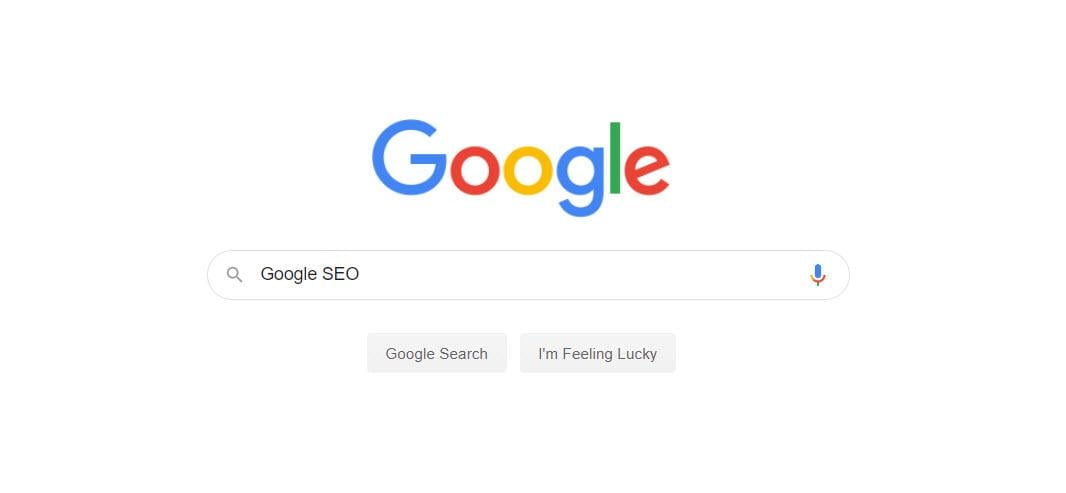
Google Search Optimization: Boost Rankings with Proven Strategies
Are you struggling to get your website noticed on Google? You’re not alone.
With millions of pages competing for attention, standing out can feel impossible. But what if you could unlock simple strategies to boost your site’s visibility? Google Search Optimization is the key to making your content shine in search results. You’ll discover practical tips that anyone can use to improve rankings and attract more visitors.
Keep reading, and you’ll learn how to turn your website into a powerful magnet for your ideal audience.
Keyword Research
Keyword research is the first step in Google search optimization. It helps you find the right words your audience types in search engines. Using the best keywords can bring more visitors to your site. It also helps you understand what your audience wants. This knowledge guides your content creation and marketing efforts.
Finding High-impact Keywords
High-impact keywords are words that get many searches but have low competition. These keywords can bring more traffic to your site quickly. Use tools like Google Keyword Planner or Ubersuggest to find these words. Choose keywords that match your content and audience needs. Focus on terms that show clear user intent.
Analyzing Competitor Keywords
Check what keywords your competitors use to rank high. This gives ideas on what works in your niche. Use SEO tools like SEMrush or Ahrefs to find competitor keywords. Analyze their strengths and weaknesses. Target keywords they miss to gain an advantage.
Using Long-tail Keywords
Long-tail keywords are longer, specific phrases. They attract visitors who want precise answers. These keywords usually have less competition. They help you reach a focused audience. Add long-tail keywords naturally to your content for better results.
On-page Seo
On-page SEO focuses on improving parts of your website that you control. This helps search engines understand your content better. Good on-page SEO makes your site easier to find and use.
It involves optimizing text, images, and site structure. Each element plays a role in boosting your ranking. Small changes can bring big results in search visibility.
Optimizing Title Tags And Meta Descriptions
Title tags tell search engines what your page is about. Keep titles clear and include main keywords. Limit titles to 60 characters for best display.
Meta descriptions summarize the page content. Write descriptions that attract clicks. Use keywords naturally and keep them under 160 characters.
Improving Header Tags
Headers organize your content for readers and search engines. Use H1 for the main title only. Use H2 and H3 for subheadings to break content into sections.
Headers should include keywords to boost SEO. They make scanning easier for visitors. Clear headers improve user experience and content flow.
Enhancing Url Structure
URLs should be short, readable, and keyword-rich. Avoid long strings of numbers or symbols. Use hyphens to separate words in URLs.
Simple URLs help search engines and users understand page topics. Clean URLs also improve click-through rates from search results.
Optimizing Images And Media
Use descriptive file names for images. Add alt text to explain images to search engines. Alt text improves accessibility and SEO.
Compress images to reduce load time. Fast-loading pages rank better and keep visitors happy. Choose the right file format for quality and size.
Content Creation
Content creation plays a vital role in Google search optimization. It helps websites gain visibility and attract visitors. Well-crafted content keeps users interested and encourages them to explore more pages. Search engines favor content that is clear, relevant, and valuable. This section covers key strategies for creating content that performs well in search results.
Crafting Engaging Content
Write content that speaks directly to your audience’s needs. Use simple words and short sentences. Tell a story or share useful information. Make the text easy to scan with headings and bullet points. Keep paragraphs brief to hold readers’ attention. Good content invites users to stay longer on the site.
Incorporating Keywords Naturally
Choose keywords related to your topic carefully. Place them in titles, headings, and throughout the text. Avoid stuffing keywords in every sentence. Use them where they fit smoothly. Natural keyword use helps search engines understand your content. It also keeps readers comfortable and engaged.
Updating Content Regularly
Refresh your content often to keep it relevant. Add new information and remove outdated facts. Regular updates show search engines your site is active. Updated content attracts repeat visitors and improves ranking. Make it a habit to review and improve your pages.

Technical Seo
Technical SEO is the foundation of a well-optimized website. It helps search engines understand and crawl your site better. A technically sound website improves user experience and boosts rankings. This section covers key technical SEO practices that you can apply easily.
Improving Site Speed
Site speed affects how users and search engines see your website. Fast-loading pages keep visitors engaged. Compress images and use browser caching. Minimize code like CSS and JavaScript. Use a reliable hosting service. These steps reduce load times and improve performance.
Ensuring Mobile-friendliness
Most people use mobile devices to browse the web. A mobile-friendly site adapts to small screens smoothly. Use responsive design to adjust layouts automatically. Avoid large fonts and buttons that are hard to click. Test your site on various devices. Mobile optimization helps keep visitors and rank better.
Fixing Crawl Errors
Crawl errors stop search engines from accessing your pages. Use tools like Google Search Console to find these errors. Fix broken links and incorrect redirects. Ensure your robots.txt file does not block important pages. Regularly monitoring crawl errors keeps your site healthy and easy to index.
Implementing Structured Data
Structured data helps search engines understand your content clearly. Use schema markup to highlight important information. This can include reviews, events, or product details. Proper markup can improve your search result appearance. It often leads to higher click-through rates.
Link Building
Link building is a key part of Google Search Optimization. It helps search engines find your site and decide how important it is. The more quality links you have from other sites, the higher your site can rank. Good links show that your content is trusted and useful.
Acquiring Quality Backlinks
Focus on getting links from websites with strong reputations. Sites that are related to your topic add more value. Avoid links from low-quality or spammy sites. Quality backlinks improve your site’s authority and boost search rankings. Reach out to trusted sites for natural link opportunities.
Guest Posting Strategies
Write articles for other blogs in your industry. Include a link back to your site in the content or author bio. Choose blogs with real readers and good engagement. Guest posting builds your brand and brings traffic to your site. Always create helpful and original content for guest posts.
Leveraging Social Media
Share your content on social media platforms to attract attention. Social signals can lead to more backlinks and visits. Engage with followers to build relationships and trust. Use social media to promote your best pages and blog posts. This can increase your site’s visibility and link potential.
User Experience
User experience is a key factor in Google Search Optimization. A website that is easy to use keeps visitors longer. It helps search engines understand your site better. Good user experience leads to higher rankings and more traffic.
Focus on making your site simple and clear. Fast loading times and mobile-friendly design matter a lot. Visitors should find what they want quickly and without trouble.
Enhancing Site Navigation
Clear navigation guides visitors through your site. Use simple menus and logical page links. Visitors feel comfortable and can find information fast. Breadcrumbs help users track their path on the site. Avoid clutter and too many options at once. This keeps the site clean and easy to use.
Reducing Bounce Rates
Bounce rate measures how many visitors leave quickly. A high bounce rate signals poor user experience. Improve content quality and page speed to keep visitors. Make sure pages match the search intent well. Use clear calls to action to guide users. Lower bounce rates improve your site’s search ranking.
Improving Engagement Metrics
Engagement shows how visitors interact with your site. Track time spent, pages viewed, and actions taken. Use interesting content to hold attention longer. Add images, videos, and easy-to-read text. Encourage users to comment or share content. Better engagement tells Google your site is valuable.
Monitoring And Analytics
Monitoring and analytics play a vital role in Google search optimization. They help you understand how your website performs in search results. By tracking key data, you can make smart decisions to improve your rankings and traffic.
Regularly checking your site’s progress keeps your SEO efforts on the right path. It shows what works and what needs change. This way, you avoid wasting time on strategies that do not bring results.
Tracking Keyword Rankings
Tracking keyword rankings shows your website’s position in Google search. It helps you see which keywords bring visitors. Watch for changes over time. Rise in rankings means your SEO is effective. A drop signals the need for adjustment. Focus on keywords that match your content and audience. Use simple tools to check rankings daily or weekly.
Analyzing Traffic Sources
Analyzing traffic sources reveals where your visitors come from. It can be search engines, social media, or direct visits. Knowing this helps you focus your marketing efforts. More traffic from Google means your SEO works well. Low traffic from social sites may need more social sharing. Check the devices visitors use. Mobile traffic is important for SEO today.
Using Google Search Console
Google Search Console is a free tool for website owners. It shows how Google views your site. Use it to find errors that hurt your SEO. Check which keywords bring traffic to your pages. See how many clicks and impressions your site gets. Submit sitemaps to help Google index your pages fast. Fix issues like broken links or slow loading times. This tool is essential for ongoing SEO success.

Frequently Asked Questions
What Is Google Search Optimization?
Google search optimization improves website visibility in Google search results. It involves using keywords, quality content, and technical SEO techniques to rank higher and attract more organic traffic.
How Does Google Rank Websites?
Google ranks websites using algorithms that analyze relevance, quality, and user experience. Factors include keywords, backlinks, site speed, mobile-friendliness, and content freshness.
Why Is Keyword Research Important For Seo?
Keyword research identifies terms users search for. It helps create relevant content that matches user intent, improving rankings and attracting targeted traffic.
How Can I Improve Website Loading Speed?
Optimize images, leverage browser caching, minimize code, and use fast hosting. Faster loading enhances user experience and positively impacts Google rankings.
Conclusion
Optimizing your site for Google search takes time and effort. Use clear keywords that match what people search for. Keep your content useful and easy to read. Regular updates help your site stay relevant. Focus on user experience and fast loading times.
Small changes can lead to better rankings. Keep learning and adjusting your strategy. Success comes from patience and consistent work. Your site can become easier to find with steady improvements. Stay focused and keep optimizing step by step.



